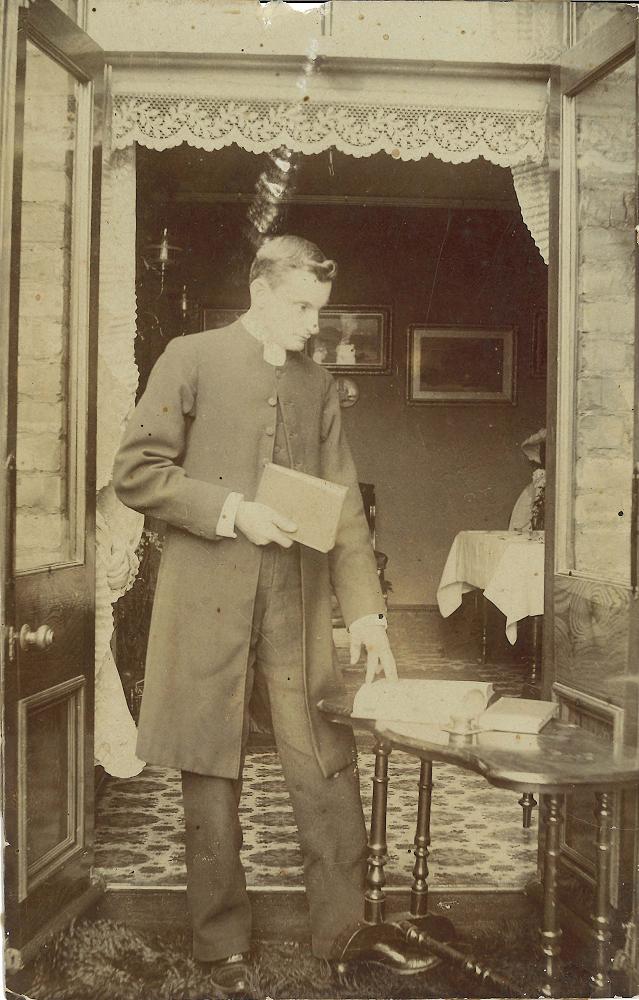
Carving a Niche
Thomas Arthur Pybus 1873 – 1957
This writer owes a sort of duty to Arthur Pybus, one of the early historians of New Zealand Methodism, whose legacy is still influential in this part of Aotearoa. An early memory, back to 1970, is of calling at his home in Ravensbourne and speaking with his daughter about what was going to happen to his collection of books on New Zealand. She was moving from the place she had called home for many years. Her answer was a simple one – they were going to the Dunedin Public Library, to be available to anyone interested in the early history of the Otakou (Otago) area. Arthur Pybus had given his life to the study of the wider Dunedin area, and he is still remembered.
Arthur was born in Yorkshire and claimed a family connection with the Wesley’s. His family came to Kuripuni, near Masterton, where his father was a blacksmith. Their Methodist affiliation was with the Primitive Methodists, and he served them well at Westport, Newtown (Wellington) and Elles Rd, Invercargill. During this latter period, he became involved in the Territorial Army, eventually attained the rank of Lt. Colonel, and was at one stage the senior Methodist Chaplain. For these services he was awarded the Volunteer Decoration in 1932. After the union of 1913 he came to Dundas St in Dunedin and spent the rest of his ministry in this city. It was his time at Port Chalmers (1926-1939) that gave him his second alternative career – for his responsibilities there brought him into close contact with the tangata whenua at Otakou, on the other side of the harbour.
After nearly a century the Methodist presence at Otakou was dwindling. The old wooden chapel on the marae was crumbling, and there weren’t many of the older generation to maintain it. Within a few years Arthur and the elders had established a closer and more active relationship. In the early 1930s, he started writing up the history of the first Christian mission in the South Island, - that established by James Watkin at Waikouaiti. In all he wrote four short histories. Later, in 1954, he published two more substantial volumes, one on the general history of the Mission – Māori and Missionary - and another to which we will return.
In the 1930s the centenary of the signing of the Treaty of Waitangi was looming, and Arthur Pybus wanted to do something noteworthy to mark the occasion. With the support of the elders at Otakou he launched an appeal to raise funds for the erection of a Centennial Memorial Church at the marae. To achieve this, he wanted substantial grants - and he canvassed widely, even overseas for assistance. The church was in favour of the project but could not make a grant to assist unless the land itself was Methodist property. The trustees agreed to, in effect, alienate the land to the Church, the money was raised, and a fine building in reinforced concrete with molded concrete Māori motifs was completed in time.
This church has since become an important part of a very busy marae and is regarded as a taonga by the runanga. While not regularly used for worship, it achieves many of Pybus’s objectives in drawing attention to the, now, 180 years of Methodist involvement in the life of Otakou Kai Tahu. For this reason alone, Arthur Pybus is to be honoured.
Two further things need to be said. Arthur Pybus was a man of his time, and he did not have access to the historical sources now available. His purpose in writing was by way of tribute to the early missionaries, and especially James Watkin, who is the principal subject in Pybus’s Māori and Missionarypublished by A.H. & A.W. Reed in 1954.It was largely uncritical history, not questioning the assumptions of Methodist and of European missionary thinking. We cannot these days simply accept those assumptions uncritically. But we need to respect the standpoint of earlier generations of historians who admired the work of the pioneers. Without such as Arthur Pybus much would have been lost.
When he retired in 1939 he settled in Ravensbourne and died there in August 1957. This tribute finds its place here because it is exactly 150 years since his birth at Guisborough in Yorkshire. The importance of his contribution to Māori history and welfare was recognized with the award of an O.B.E. in the last year of his life. He had carved his niche
That other work, The Māori of the South Island (Wgtn 1954) was an account of the Māori settlement of Te Wai Pounamu - not many writers had attempted this at that time. It has to be said that modern scholarship has provided us with radically different ways of understanding where tangata whenua came from, both in terms of their arrival in Aotearoa, and of tribal movements within this country. Pybus is not to be disregarded in the light of new scholarship.
This article gives this writer the opportunity to draw the readers’ attention to the very significant work by Atholl Anderson, Judith Binney and Aroha Harris, Tangata Whenua – a History (Wellington 2015). Here is a work that really does address our beginnings as a people – both Māori and pākehā. It is important reading.
